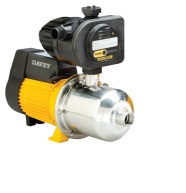Think low water pressure is just a shower problem? That’s one of the biggest misconceptions we come across. In reality, low flow affects your entire home—from how your washing machine fills to how many taps you can run at once. It’s not always about faulty plumbing. Sometimes, it’s your system’s inability to boost and balance pressure where and when it’s needed most.
But here’s where it gets interesting…
- Why do some second-story bathrooms barely get a trickle?
- What’s causing your water pressure to drop when two appliances run at once?
- Is a whole house water booster pump always the better option—or not?
Let’s break it down.
Where Does Water Pressure Go Wrong?
1. Struggling with Low Flow in Upstairs Bathrooms?
If your second-floor shower feels more like a drip than a rinse, it’s likely due to gravity and poor water line pressure. Municipal water lines are often unable to maintain consistent flow beyond the first floor—especially during peak demand hours. A household water booster pump in this scenario can stabilize flow rate and lift pressure efficiently, delivering consistent performance where it’s most needed.
2. Poor Pressure from the Municipal Line? It’s More Common Than You Think.
City water isn’t always reliable—particularly in older neighborhoods or on elevated lots. Municipal supply lines may fall below 40 psi during peak usage, which can lead to underperforming appliances and faucets. Installing a household water booster pump gives you control over your own pressure levels—so your system performs consistently, no matter what the city delivers.
3. Washing Machine Flow Issues? Here’s Why It Happens
Ever notice how your water pressure plummets when your washing machine and dishwasher run together? These high-demand appliances need steady, high flow to perform properly. Without a booster system, you’ll experience variable pressure and longer wash cycles. With a smart pump setup, flow remains balanced—even during multi-appliance use.
Whole-Home vs Point-of-Use: Which Boosting Solution is Right for You?
Here’s the truth: not every pressure issue needs a full overhaul. A whole-home booster system is ideal if you’re seeing low pressure across multiple fixtures, or if you have a large home with several bathrooms. But for isolated problems—like a low-flow kitchen tap or shower—point-of-use systems can be more cost-effective and easier to install.
That said, there’s something else to consider…
What If the Problem Isn’t Just Pressure?
Many homeowners think low flow = low pressure. But what if clogged pipes or outdated valves are to blame? Don’t rush into a pump without a full system check.
Can Booster Pumps Save You Money Long-Term?
Beyond better flow, pressure boosting can improve appliance efficiency and extend plumbing life. But the ROI might surprise you—we’ll touch on that in a deeper system consultation.
What Size Booster System Does Your Home Need?
Installing the wrong pump can do more harm than good. Let’s explore how flow rate, system design, and demand curves determine the right spec.
FAQs: Quick Answers to Pressure Problems
Q1: Why is my water pressure fine in the kitchen but weak upstairs?
A: It’s usually due to elevation differences and pipe layout. Second-story fixtures often suffer without proper pressure balancing. A household water booster pump can help equalize flow across levels.
Q2: Can a booster pump work with a water softener or filter system?
A: Absolutely. A well-designed system should integrate all components—softeners, filters, UV, and pumps—so pressure is optimized post-treatment.
Q3: How long do domestic pressure boosting systems last?
A: With premium-grade components and professional installation, a quality booster pump can last 10+ years with minimal maintenance.
Why Choose a Custom-Engineered Water Booster System?
You don’t just need “a pump.” You need a system—engineered for your water source, your demand, and your home layout. Off-the-shelf solutions often miss the mark.
Whether you’re a homeowner, property manager, or contractor, experts deliver custom pressure boosting solutions that fix the problem the right way.
Final Thought
Your home’s water pressure issues are telling you something. The key is listening, diagnosing, and solving them with the right tech. Whether it’s low-flow showers, inconsistent appliance performance, or an entire home that struggles to keep up—there’s a proven solution.























